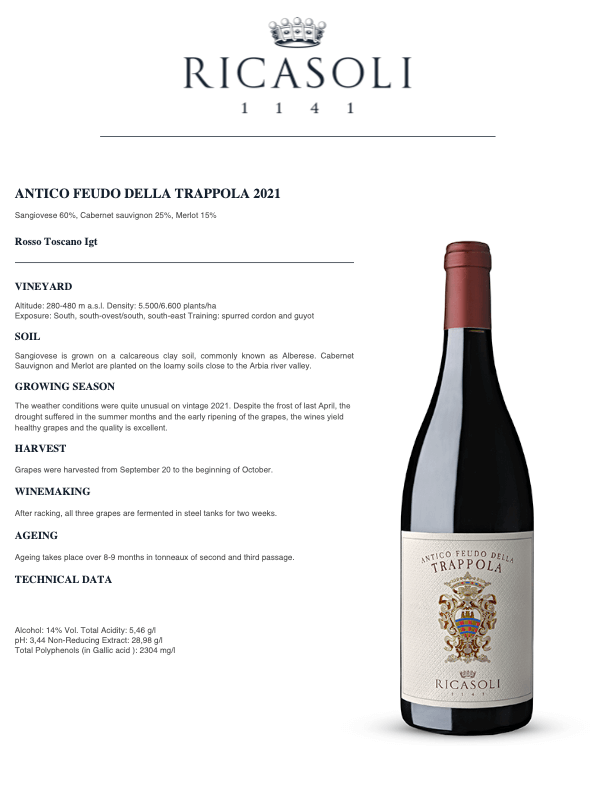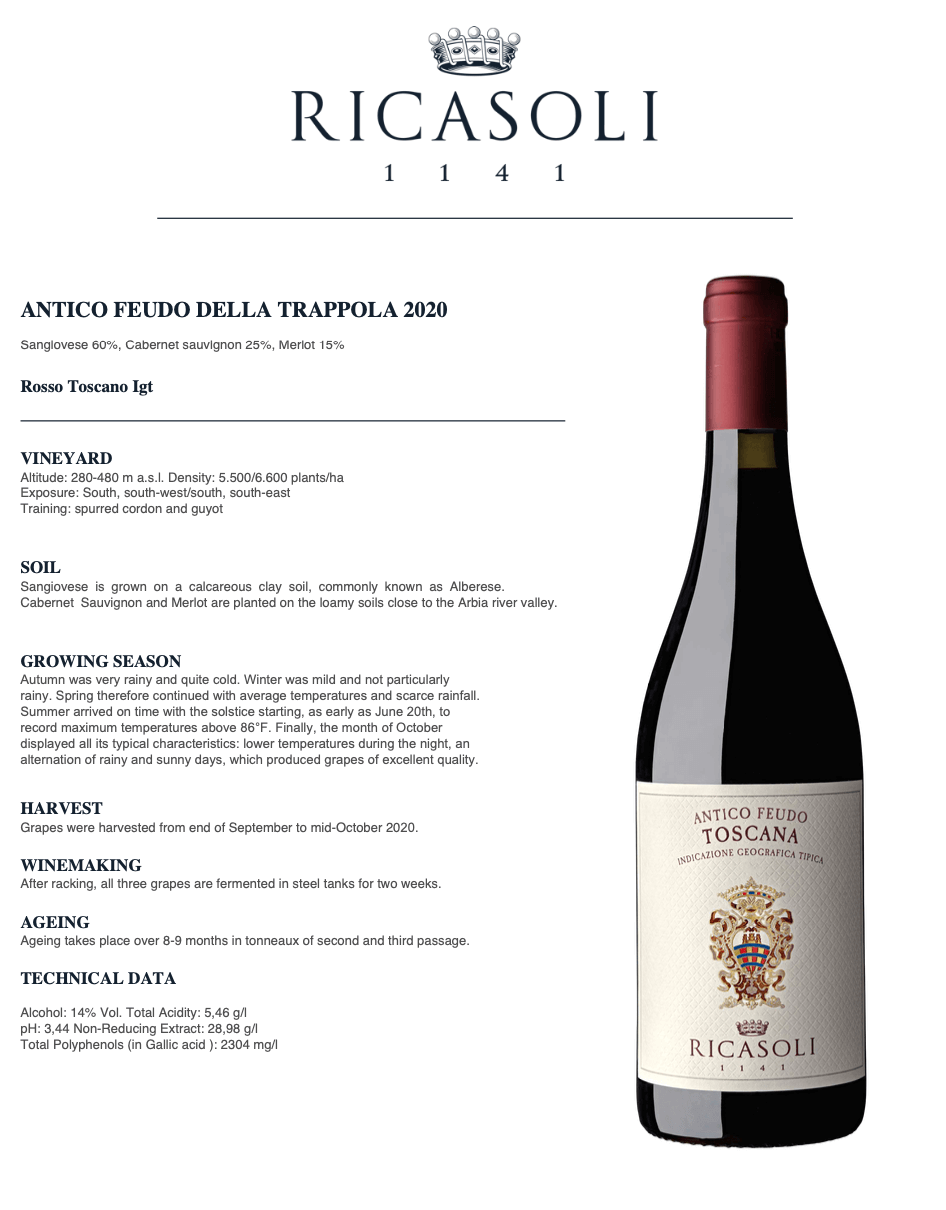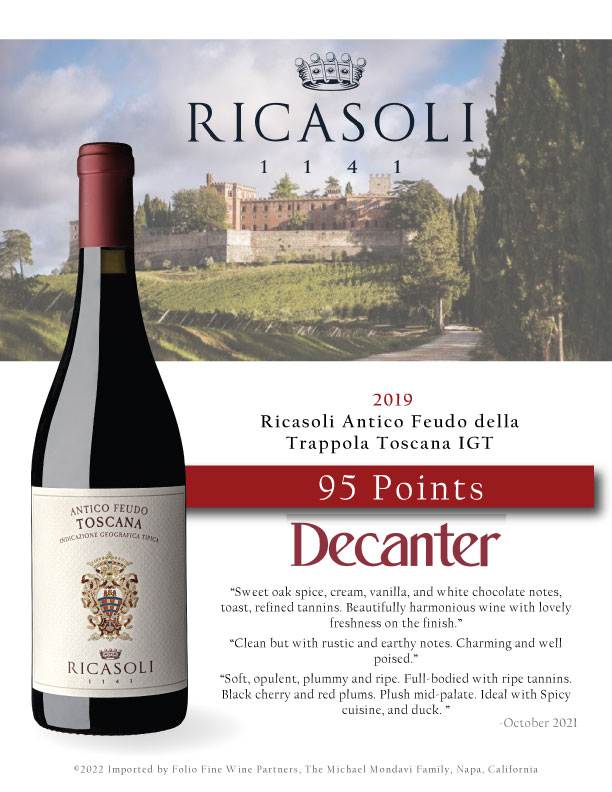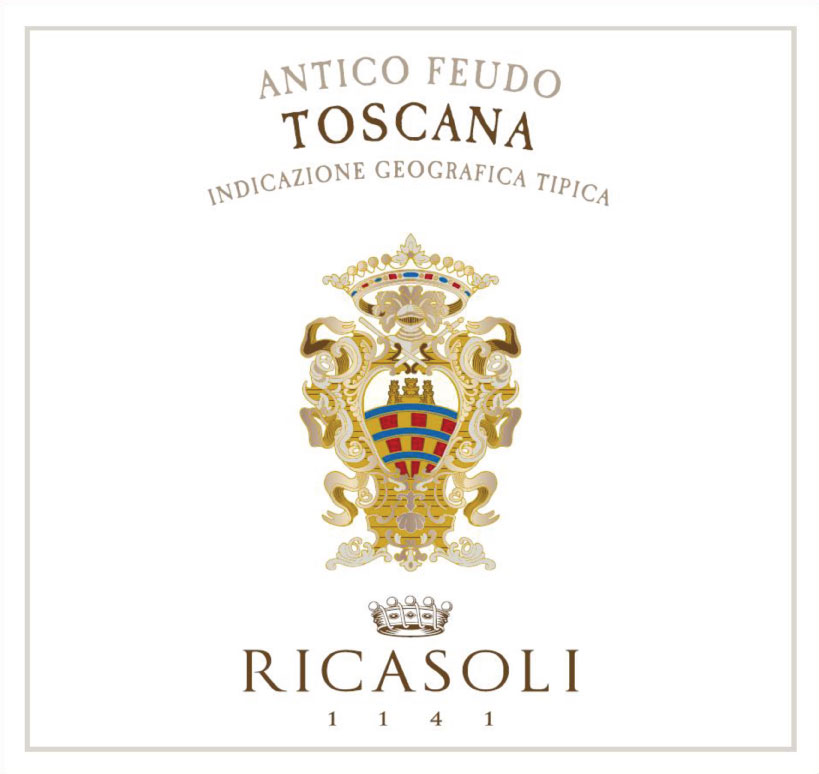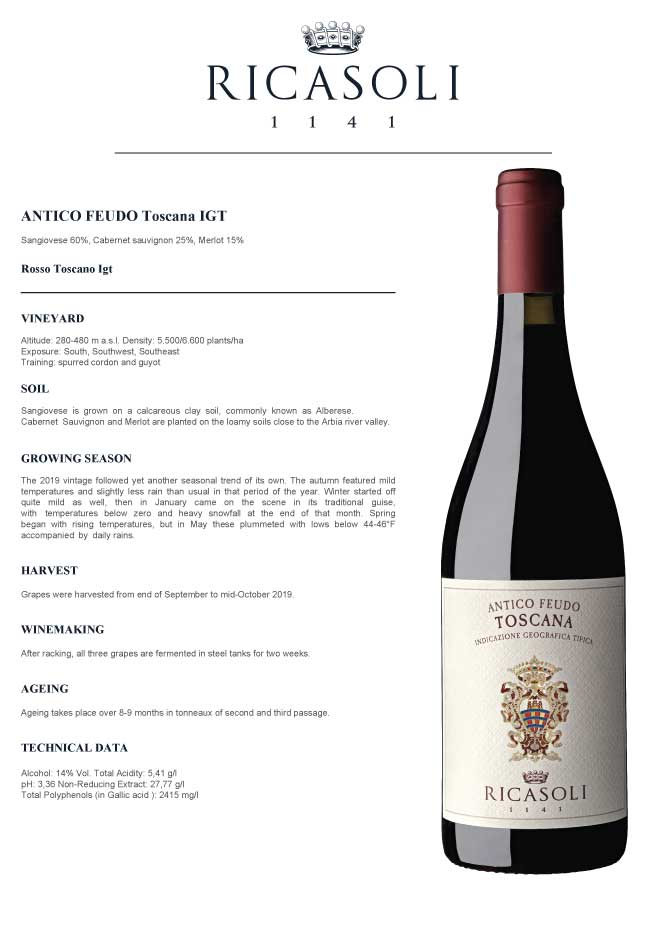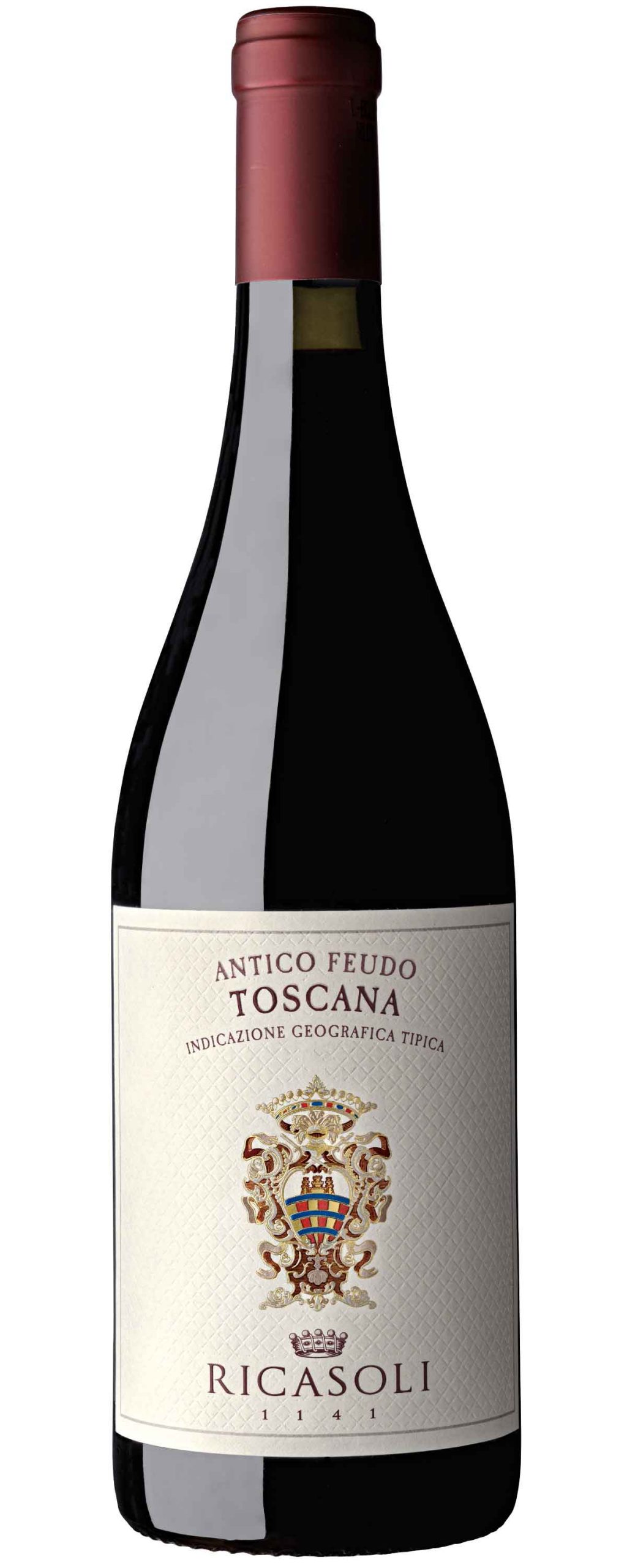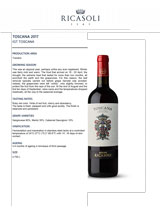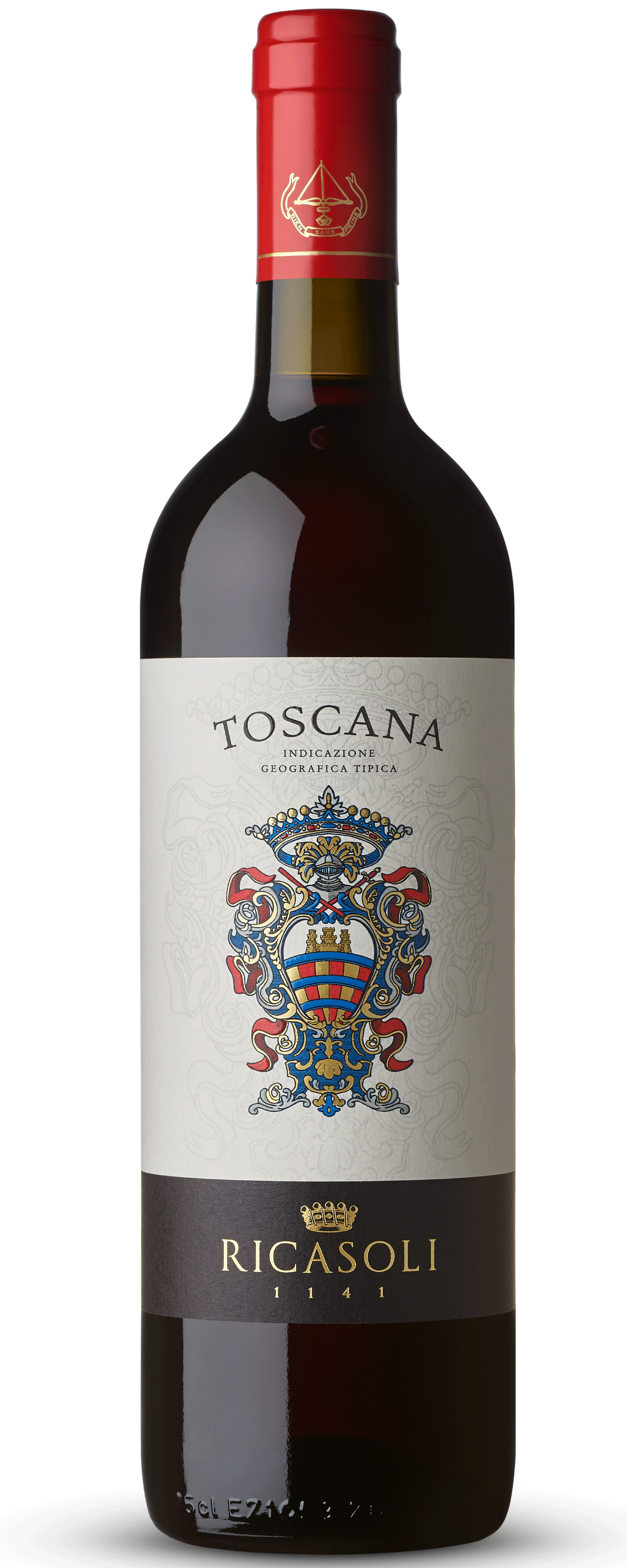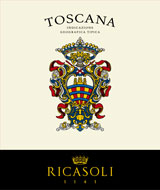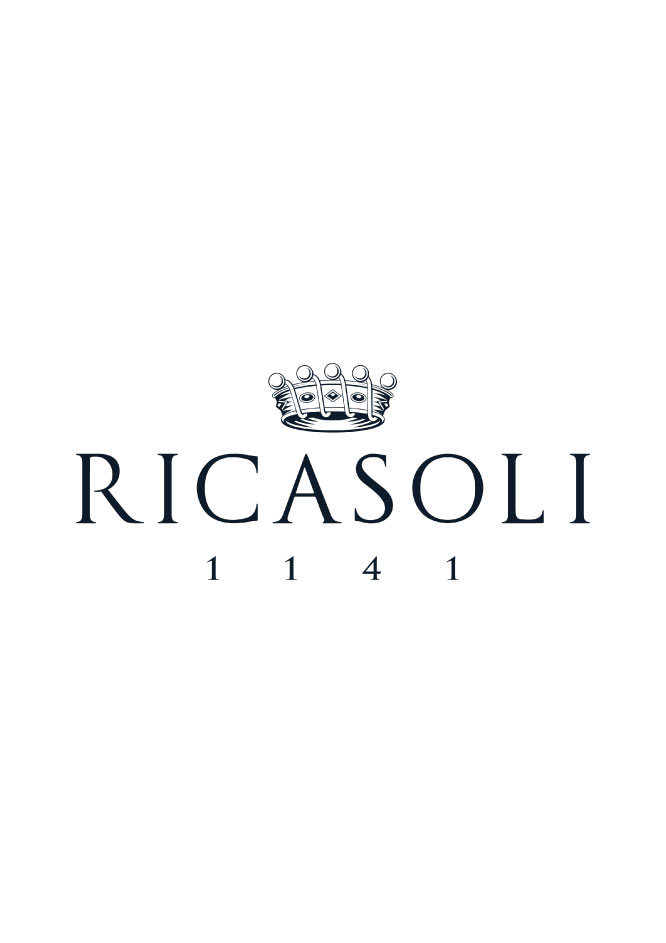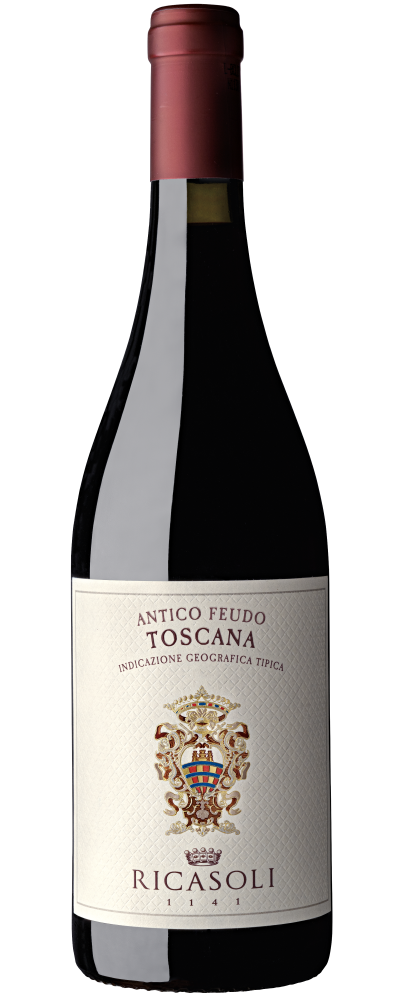


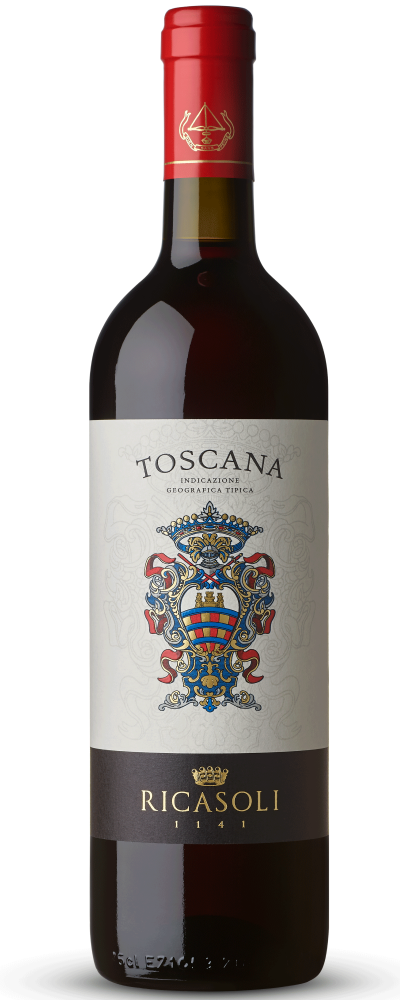
Ricasoli Antico Feudo Toscana IGT
Toscana IGT, Tuscany, Italy
Tasting Notes
Ruby red color with hints of red fruit, cherry and strawberry. The taste is fresh, pleasant and with good acidity. The finish is balanced and persistent.
Vintage Notes
The weather conditions were quite unusual on vintage 2021. Despite the frost of last April, the drought suffered in the summer months and the early ripening of the grapes, the wines yield healthy grapes and the quality is excellent.
Harvest Notes
Grapes were harvested from September 20 to the beginning of October.
Winemaking Notes
After racking, all three grapes are fermented in steel tanks for two weeks. Ageing takes place over 8-9 months in tonneaux of second and third passage.
Vineyard Notes
Altitude: 280-480 m a.s.l.
Density: 5.500/6.600 plants/ha
Exposure: South, south-west/south, south-east
Training: spurred cordon and guyot
Soil: Sangiovese is grown on a calcareous clay soil, commonly known as Alberese. Cabernet
Sauvignon and Merlot are planted on the loamy soils close to the Arbia river valley.
Technical Info
Varietals: Sangiovese 60%, Cabernet sauvignon 25%, Merlot 15% Alcohol: 14% Vol. Total Acidity: 5.46 g/l pH: 3.44 Non-Reducing Extract: 28.98 g/l Total Polyphenols (in Gallic acid ): 2304 mg/l
Tasting Notes
Ruby red color with hints of red fruit, cherry and strawberry. The taste is fresh, pleasant and with good acidity. The finish is balanced and persistent.
Vintage Notes
Autumn was very rainy and quite cold. Winter was mild and not particularly rainy. Spring therefore continued with average temperatures and scarce rainfall. Summer arrived on time with the solstice starting, as early as June 20th, to record maximum temperatures above 86°F. Finally, the month of October displayed all its typical characteristics: lower temperatures during the night, an alternation of rainy and sunny days, which produced grapes of excellent quality.
Harvest Notes
Grapes were harvested from end of September to mid-October 2020.
Winemaking Notes
After racking, all three grapes are fermented in steel tanks for two weeks. Ageing takes place over 8-9 months in tonneaux of second and third passage.
Vineyard Notes
Altitude: 280-480 m a.s.l.
Density: 5.500/6.600 plants/ha
Exposure: South, south-west/south, south-east
Training: spurred cordon and guyot
Soil: Sangiovese is grown on a calcareous clay soil, commonly known as Alberese. Cabernet Sauvignon and Merlot are planted on the loamy soils close to the Arbia river valley.
Technical Info
Varietals: Sangiovese 60%, Cabernet sauvignon 25%, Merlot 15%
Alcohol: 14% Vol.
Total Acidity: 5.46 g/l
pH: 3.44
Non-Reducing Extract: 28.98 g/l
Total Polyphenols (in Gallic acid ): 2304 mg/l
Tasting Notes
Ruby red color with hints of red fruit, cherry and strawberry. The taste is fresh, pleasant and with good acidity. The finish is balanced and persistent.
Harvest Notes
Grapes were harvested from end of September to mid-October 2019.
Winemaking Notes
After racking, all three grapes are fermented in steel tanks for two weeks. Ageing takes place over 8-9 months in tonneaux of second and third passage.
Technical Info
Sangiovese 60%, Cabernet sauvignon 25%, Merlot 15%
Tasting Notes
Ruby red color with hints of red fruit, cherry and strawberry. The taste is fresh, pleasant and with good acidity. The finish is balanced and persistent.
Winemaking Notes
Fermentation and maceration takes place in stainless steel tanks at controlled temperatures between 75.2°F - 80.6°F with 14 - 16 days of skin contact. Aging takes place over 3 - 4 months in tonneaux of third passage.
Technical Info
Sangiovese 60%, Merlot 30%, Cabernet Sauvignon 10%
 Back To Menu
Back To Menu



